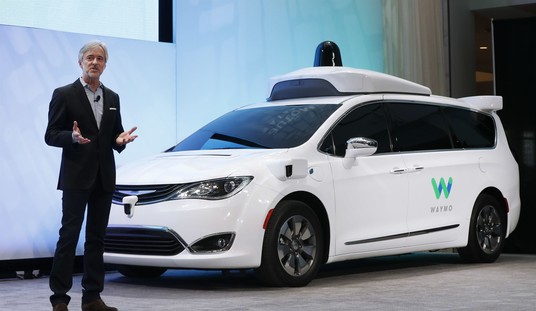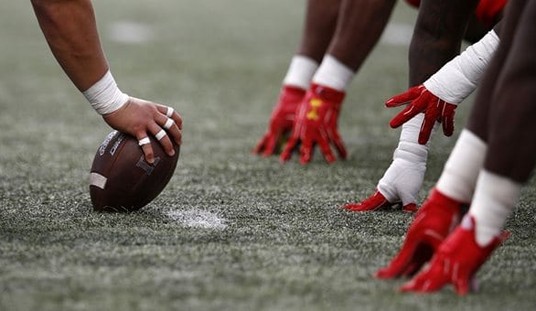I adore road trips, especially when I am not the one driving. Thankfully, hubby enjoys being in the driver’s seat, so I get that option more often than not. Anyone who has been on the open road, and especially has gotten off the beaten path, understands the sense of adventure and freedom resident in even the smallest of trips. The 400 miles north from Orange County to San Luis Obispo is enough space, road, and adventure to make me feel as though I have traveled. Road Tripping is a distinctly unique American activity. In Europe they take trains. In America, we drive, and it is unrivaled. I would dare say the road trip is one of the last bastions of American freedom. I’ll take a road trip over a plane trip any day of the week.
Which brings me to this fascinating article in The Wall Street Journal (WSJ). One of their reporters decided to take a 2,000-mile road trip from New Orleans to Chicago in an electric vehicle. It’s a worthy experiment, since Dementia Joe and Co. are determined to get us out of our gas-guzzling, fossil-fuel-dependent clunkers, and into bright, shiny, computer-controlled electric vehicles.
This despite the price tag of over $40,000 for lower-end models, to over $100,000 for high-end ones. The base salary of the average American is $45,000 annually.
Sure, Jan.
The reporter aptly named her article, “I Rented an Electric Car for a Four-Day Road Trip. I Spent More Time Charging It Than I Did Sleeping.” Straight out the gate, this is not a winning argument for people like me who love the drive, not sitting at charging stations.
I thought it would be fun.
That’s what I told my friend Mack when I asked her to drive with me from New Orleans to Chicago and back in an electric car.
I’d made long road trips before, surviving popped tires, blown headlights and shredded wheel-well liners in my 2008 Volkswagen Jetta. I figured driving the brand-new Kia EV6 I’d rented would be a piece of cake.
If, that is, the public-charging infrastructure cooperated. We wouldn’t be the first to test it. Sales of pure and hybrid plug-ins doubled in the U.S. last year to 656,866—over 4% of the total market, according to database EV-volumes. More than half of car buyers say they want their next car to be an EV, according to recent Ernst & Young Global Ltd. data.
Oh—and we aimed to make the 2,000-mile trip in just under four days so Mack could make her Thursday-afternoon shift as a restaurant server.
WSJ has reported on the fact that despite Dementia Joe’s urgency to get us off fossil fuels and out of gas-powered cars by 2030, the charging infrastructure does not match the goal.
U.S. efforts to build a national network of electric vehicle charging stations are moving slowly as states figure out how to fairly dole out public funding to kick-start a new service industry.
As the Biden administration prepares to give states $7.5 billion for new charging stations, a similar recent effort suggests a difficult path is ahead. States received $424 million that could be used for charging stations as part of a $2.8 billion settlement by Volkswagen AG VOW -1.97%▼ to resolve allegations that it cheated on diesel emissions tests. So far, more than four years later, they have spent about 48% of those charging dollars.
Six states including Illinois and Connecticut that say they plan to use VW settlement money on chargers have yet to disburse any funds. Four states say they plan to use the money for other projects such as lower-emissions bus fleets, according to data from Atlas Public Policy, a Washington, D.C., research firm that tracks the electric-vehicle industry. Thirty states have distributed most of their available charging money, including Hawaii, New Mexico, South Dakota and New York.
Shorter: Not even governors are enthused about this. The capacity for waste, corruption, and malfeasance is huge, and probably already happening. Not to mention the maintenance and repair.
Further, the regime hit another snag in its push to rob you of your freedom of movement under the guise of climate change:
From the Daily Caller:
A new law prevents supplies from China for electric vehicles and other green energy products from entering the U.S., halting a Biden administration priority, the New York Times reported.
The Uyghur Forced Labor Prevention Act requires proof that any products coming from Xinjiang, one of the main sources of products crucial in making batteries, were free of forced labor, the NYT reported. The law goes into effect on Tuesday.
President Biden is pushing to make at least 50% of vehicles emission-free by 2030 as part of his push for green energy, The White House stated in a press release.
[Writer falls out of her chair from laughing uproariously. Picks herself up from the floor, sits down, and continues writing.]
Can this administration be any more inept? Maybe I shouldn’t ask that because, with each new day, they seem to plumb new depths. The Daily Caller article reiterates what WSJ stated. Very few states (not just the red ones) appear to be enthused about this push:
The Biden administration has faced obstacles in its EV initiative, including cratering revenues among auto manufacturers. Ford saw a 5% decline in revenue and a $5.4 billion loss in the first quarter after investing in the production of electric vehicles. A number of states, including New Mexico, Colorado, Utah, Wyoming and Montana criticized Biden’s plan for electric vehicle charging stations.
Which takes us back to the WSJ reporter’s road trip.
“The government is spending $5 billion to build a nationwide network of fast chargers, which means thousands more should soon dot major highways. For now, though, fast chargers tend to be located in parking lots of suburban shopping malls, or tethered to gas stations or car dealerships.”
Wow… We have record inflation. Looming food shortages. Record high gas prices. Yet, our government has FIVE BILLION to spend on charging infrastructure. Would it not be easier (and probably less money) to remove the restrictions from oil and gas leases and return to the free flow of American energy?
We all know the answer.
The reporter’s rented EV had a range of 310 miles on one charge. With the use of a PlugShare app, a user-generated map of public chargers across the nation, she calculated that she would only have to charge twice each day, and that she would be able to plug in overnight.
That plan went south really fast.
The PlugShare app—a user-generated map of public chargers—showed thousands of charging options between New Orleans and Chicago. But most were classified as Level 2, requiring around 8 hours for a full charge.
While we’d be fine overnight, we required fast chargers during the days. ChargePoint Holdings Inc., which manufactures and maintains many fast-charging stations, promises an 80% charge in 20 to 30 minutes. Longer than stopping for gas—but good for a bite or bathroom break.
Americans have trouble fully charging the lithium batteries in our smartphones, especially when we don’t have the right charger. Dependent upon the source (outlet), it could charge quickly, or it could take longer than expected. So, why would anyone think a gigantic lithium battery that is required to move a 3,000 to 5,000 lb. vehicle would work any differently?
It turns out not all “fast chargers” live up to the name. The biggest variable, according to State of Charge, is how many kilowatts a unit can churn out in an hour. To be considered “fast,” a charger must be capable of about 24 kW. The fastest chargers can pump out up to 350.
And that’s not even factoring in weather, which was a major hurdle for the WSJ reporter to overcome. She took advantage of the interstate highway system, but what happens when you get off the beaten path? Or in a rural area where infrastructure is scarce to nonexistent? Once your gas-powered vehicle is filled up, you don’t have to think twice about the time it takes to get to your next destination. There is surety and security in this that.
The EV? Not so much. With a variable amount of charge dependent upon the circumstance, what does one do if your circumstance does not match the testing conditions or is not covered in the vehicle manual?
The reporter futzed around and found out.
As intense wind and rain whip around us, the car cautions, “Conditions have not been met” for its cruise-control system. Soon the battery starts bleeding life. What began as a 100-mile cushion between Chicago and our planned first stop in Effingham, Ill., has fallen to 30.
“If it gets down to 10, we’re stopping at a Level 2,” Mack says as she frantically searches PlugShare.
We feel defeated pulling into a Nissan Mazda dealership in Mattoon, Ill. “How long could it possibly take to charge the 30 miles we need to make it to the next fast station?” I wonder.
Three hours. It takes 3 hours.
I begin to lose my mind as I set out in search of gas-station doughnuts, the wind driving sheets of rain into my face.
But it’s not just inclement weather. When I had a 9-5 job, I used to commute 20 miles one way using a canyon road—lots of climbing and switchbacks. I thoroughly enjoyed the pretty and pleasant ride in my gas-powered SUV, even in stop-and-go traffic, which in Los Angeles is another day ending in Y. I also enjoyed seeing all the Prius drivers pulled over to the side because their lithium batteries couldn’t take the stop-go-idle, and were overheating.
That was years ago, and hopefully, they’ve fixed that. But if you enjoy the open road and the ability to get up and go, don’t expect to be able to do it in an electric vehicle.
Yeah, given the choice, I’ll take the financial hit and keep my gas-powered V-6 SUV, along with my freedom of movement. Aside from the Coasties and the champagne elite, most Americans will.
I happen to be blessed at this time in my life to be able to take that hit. Sadly, many Americans cannot.
This administration and their malicious intentions are pure evil.













Join the conversation as a VIP Member